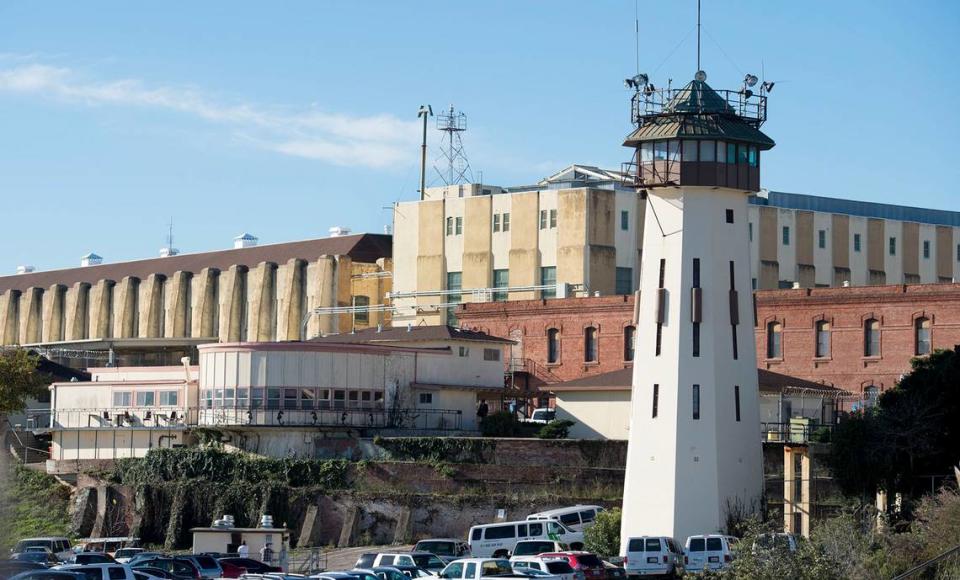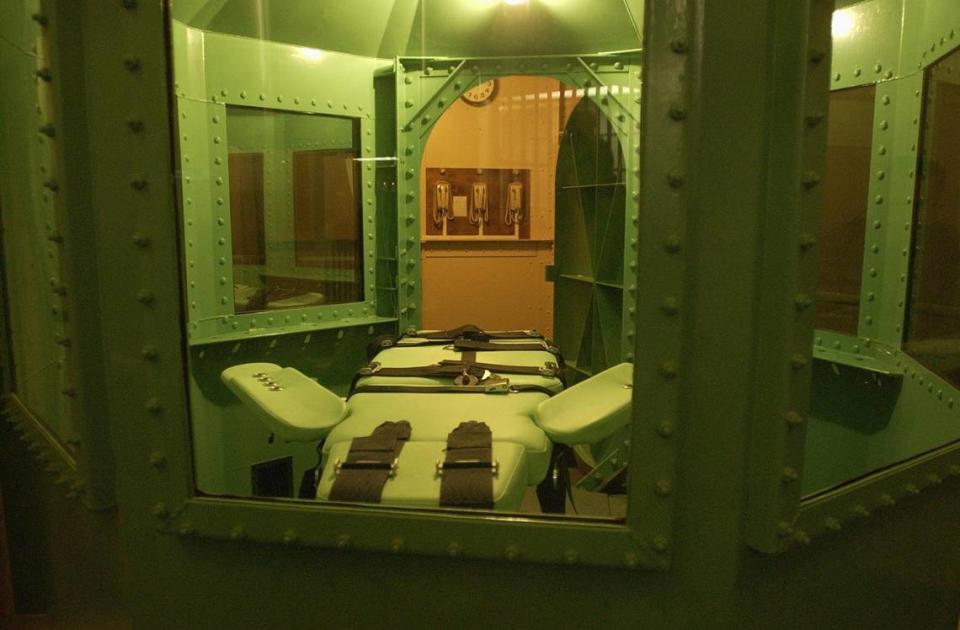San Quentin — California’s oldest prison — executed hundreds from Death Row over decades
San Quentin State Prison was once known as “The Bastille by The Bay,” an enormous facility overlooking San Francisco Bay that housed the nation’s largest Death Row and was built in 1852, making it California’s oldest prison.
“Basically, when officers went in they thought they were working for the toughest prison in the system,” said Don Novey, the former head of the California Correctional Peace Officers Association, the state’s prison guard union. “I remember, all the cells had open bars.
“You go to Pelican Bay or another maximum custody prison, those are basically cells that are sealed off with a little window in the cell door. But these open-bar settings, all a guy has to do is reach through the bars and stab you.
“In 1978, we had like 70 officers stabbed, and in the same year at San Quentin we had 140.”
The prison has changed dramatically in recent years, with the death chamber closed and Gov. Gavin Newsom ordering a moratorium on executions that affected the 737 inmates then on Death Row.

Prison to shift from maximum security
Much of the focus there now is on training and education, and Newsom announced Friday that the prison will be renamed San Quentin Rehabilitation Center and shift from being a maximum security prison. Condemned men still incarcerated there will be moved to other state prisons under the plan.
The prison, which occupies 432 acres north of the Golden Gate Bridge and houses about 3,900 inmates, most recently gained notoriety for a Covid-19 outbreak during the early months of the pandemic.
It has been the site of visits from iconic entertainers from Johnny Cash to Frank Sinatra to Phyllis Diller.
And the prison has a storied and sometimes violent history that includes an August 1971 escape attempt that left three inmates and three guards dead.
But San Quentin was known primarily for its Death Row, and the prison still houses 546 condemned inmates, including Luis Bracamontes, who gunned down two Sacramento-area sheriff’s deputies in 2014, and Andrew Mickel, who killed a Red Bluff police officer in 2002.
San Quentin’s Death Row was the largest in the nation for years and the subject of countless court fights and election battles over whether California should be executing condemned inmates.

Over 400 inmates executed since 1893
The prison was the site of 422 executions, starting with hangings in 1893 that saw 215 inmates executed in that fashion.
In 1938, the gas chamber was installed in the prison, and through 1967 the prison gassed 194 inmates to death, including four women, according to the California Department of Corrections and Rehabilitation.
The last to die during that period was Aaron Charles Mitchell, who was convicted in the murder of Sacramento police Officer Arnold Gamble and dragged to the chamber on April 12, 1967, shouting, “I am Jesus Christ!”
Following that execution, court challenges halted the use of the death penalty in California until it resumed in the predawn hours of April 21, 1992, when Robert Alton Harris was strapped into the apple-green chamber and gassed to death for the slayings of two 16-year-old boys.
Harris’ execution came amid a flurry of legal appeals that led to him being placed in the chamber twice, once for 12 minutes until a phone call came in with a court order halting the process.
Hours later, the court order had been overturned and Harris was executed.
California law changed nine months later to allow condemned inmates to choose between gas or lethal injection, but the next inmate to die - David Edwin Mason - refused to decide, leading to him also being executed by gas.

Mason, convicted in five murders, waived his right to further court appeals and told The Bee a day before his execution that he would not choose the method of his death, that it would be the state’s responsibility.
He added that he had read up on death by gas, including studying the Holocaust, and that he was scared at the prospect but ready.
“There’s not much that I don’t know from the time that I leave the holding cell to the time I enter the chamber,” he said. ‘I’m very aware.”
Even after Mason was strapped into one of the chamber’s two chairs, he refused all efforts to halt the execution and renew his court appeals, then-Warden Daniel Vasquez said.
“No, warden, I want to proceed,“ Mason told Vasquez. “Thank you, warden.”
Those were Mason’s last words.
Cyanide gas replaced by lethal injection
Following that execution, a federal court in California court ruled execution by cyanide gas constituted cruel and unusual punishment, and the state turned to lethal injection as its only method.
Eleven inmates subsequently were put to death by injection between 1996 and 2006, and in 2007 California began a refurbishing effort that used inmate labor and cost $853,000 to replace the lethal injection site that had been set up inside the old gas chamber.
That new death chamber featured a gurney in the middle of the room with four intravenous tubes routed through a wall to an “infusion control room.”
It also included two clocks, one directly above where an inmate’s head would be, the other on the wall facing the condemned inmate.
It was never used.
A series of legal challenges stopped further executions until March 13, 2019, when Newsom ordered a moratorium on the use of the death penalty and closed the execution chamber at the prison.
Prison now site of education, rehab programs
Since then, the prison has greatly expanded its training and rehabilitation programs, and has benefited from a location that provides numerous, highly educated volunteers and employees from Bay Area communities, said Michael Bien, lead attorney representing the rights of mentally ill inmates.
“San Quentin is really a place where people in the system have wanted to come because of the programs that are there already,” Bien said. “It’s not a new thing.
“It has lots and lots of restorative justice programs, it has media programs, all sorts of programs that already exist, so the state does not have to create them from scratch.”
The prison has an award-winning inmate-produced newspaper, a location that makes it much easier to attract volunteers and staff and an accredited liberal arts degree program from Mount Tamalpais College.

The college currently serves about 300 inmates at no cost to the students and has awarded more than 200 degrees, college founder and President Jody Lewen said.
“The heaviest lift for us is having people imagine incarcerated people as college students,” Lewen said. “It’s so much less violent and less racist than other institutions, and (the inmates) attribute the cultural difference to the presence of the educational programs.
“It’s harder for gangs to maintain control when people are getting to know each other in classrooms.”
The prison also has had annual visits from the staff and coaches of the NBA’s Golden State Warriors, who face off against the inmate’s San Quentin Warriors team, which last September lost a nail-biter, 83-65.


